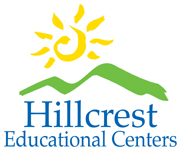When students are involved in situations and behaviors that are disruptive or dangerous, we have a set of steps we take to ensure safety and to help students learn skills to manage these situations more effectively in the future. Depending on the seriousness of the situation, staff will assign processing tasks that focus on making repairs for any harm to others or to the program. Here is a list of these steps and a description of when and how they are used.
Taking Space
Students can request to take a brief break from the current task when feeling overwhelmed or triggered. Simply ask your staff if you can take space. Your staff will talk with you to understand your needs and work with you to support you, including taking space if necessary. Most of the time, staff will be able to take you for space. Sometimes a staff may ask you to wait while he/she makes a plan for the supervision of the rest of the students. If a plan cannot be worked out for taking space, the staff will work with you to figure out an alternate plan. Sometimes a staff may encourage you to try a skill right in the area, if you have been working together on skills that can help you stay in program. The goal of taking space is to use a skill to manage your emotions and behaviors and to have you rejoin program as quickly as possible.
Skill Coaching Exercises
- Skill Coaching Exercises will be assigned when students exhibit repetitive, disruptive behavior that signals the need for skill development.
- Examples: swearing, refusing to complete tasks, provoking, horseplay, non-dangerous contraband, excessive yelling
- Steps:
1) Identify what skill is lacking
2) Identify a way for the student to practice this skill
3) Coach and/or rehearse the skill with the student
If skill coaching exercises are not successful and the student continues with problem, student can be placed on the next level, Support Level.
Support Level
- Behavior that is disruptive to programming or is concerning for the students’ safety and well being.
- Minimal potential or intent to cause harm to self or others
- The student is not considered to need increased supervision and/or counseling as a result.
- May prevent program from occurring as scheduled.
- These behaviors indicate the need for increased staff support to complete skills and tasks.
Because of this need for increased staff support, processing will be assigned and the student’s privileges will be suspended. When all processing is complete and behavior is stable, the student may participate in regular programming (regaining use of privileges). Processing is considered complete when it is approved by staff and supervisor.
Safety Level
- Behavior that caused, or was intended to cause potential significant harm to self or others.
- Student is considered to need increased supervision and counseling as a result.
- Safety Level behaviors indicate the need for increased staff support to complete skills and tasks.
Because of the significant safety concern and need for increased supervision, privileges will be suspended. When all processing is complete and safety is restored, indicating that the student no longer needs increased support and supervision, the student may participate in regular programming (regaining use of privileges). This occurs at start of next circle up period if processing is approved by staff and supervisor.
Individualized Programming
In very serious situations, where a student’s behavior has put themselves or others in very serious risk of harm, and where remaining in regular programming will not reduce this risk, Individualize Programming may be used. Individualized programming means that the treatment team makes a plan for the student to receive programming in a way that is different than the other students. This may mean having extra staff supervision, participating in some part or all parts of program from a different location, having separate transitions from the rest of the team, or other interventions that are designed to keep everyone safe and ensure that the student continues to receive programming. Individualized programming always includes skill practice, processing, and intensive support for the issues that resulted in the dangerous behaviors.
Community Board Review
Community Board Review involves a group of staff who meet weekly to discuss any serious incidents from the week that had a significant and serious impact on the community. When such an incident happens, the Board places the student on Board Review Status and meets with the student to discuss the incident. Students who are on Board Review Status will not have access to their privileges. The focus of Board Review is around safety and accountability.
The following incidents would require Board Review:
- Assault
- AWOL or Major Off-Location
- Serious Sexual Behavior
- Fire Setting Behavior (including pulling fire alarm)
- Interfering with a restraint
- Continual Disruption to the HEC Community Values
The Board will assign tasks to the student that focus on restoring safety, taking responsibility for his/her actions, and making plans for eliminating this behavior in the future. Each week, a student’s board work will be reviewed with the student at Board Review. Once all Board Work is complete, the student will no longer be on Board Review Status.
